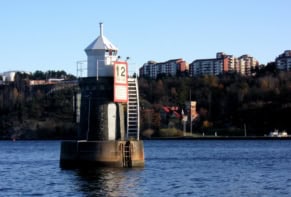Isidor Isaac Rabi’s work on the magnetic properties of nuclei, including the development of nuclear magnetic resonance, and his role as a peace campaigner during the Cold War have had profound and far-reaching effects throughout physics.
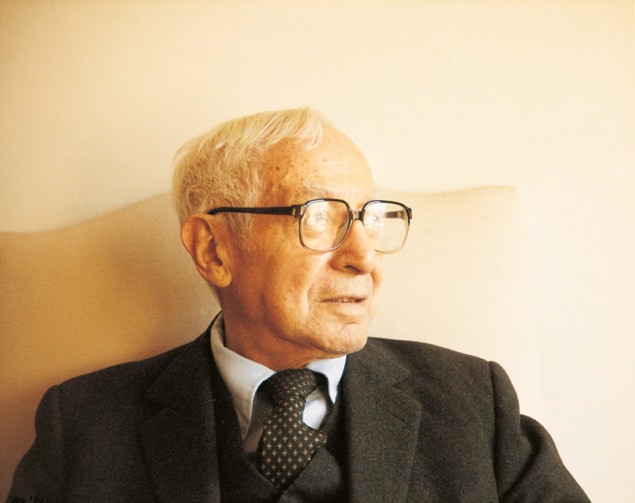
A few months before Isidor Isaac Rabi died in early 1988, his doctors watched as he was gently moved into the bore of a magnetic-resonance-imaging machine. Once inside the machine, Rabi saw a distorted image of his face in the cylindrical surface surrounding him. “It was eerie,” Rabi said. “I saw myself in that machine. I never thought my work would come to this.” An eerie moment? Certainly – since Rabi’s physical research led directly to magnetic resonance imaging, a technique that is widely used in hospitals today.
For Rabi to see his life and work embodied in that distorted facial image as he approached his 90th birthday must have been haunting. But in a deeper sense, it was an affirming moment. His persona and his physics were an unbroken whole. The character of the man determined the style of his physics. For Rabi to see himself in his work was inevitable.
The foundation years
Rabi was born in 1898 in what was the Austro-Hungarian empire and is now Poland. By the time he was two years old, Rabi and his family were living in a Jewish ghetto on the Lower East Side of New York. Rabi’s boyhood was dominated by the strictures of poverty and conservative Judaism. In their two-room flat, occupied by the four members of the Rabi family plus two boarders, hardly a sentence was spoken that did not refer to God in some fashion.
As a youngster, Rabi subjected his religious teachings to small experimental tests, only to discover that what he was taught to expect did not actually occur. So when he discovered a library book that explained the design of the Copernican system of planetary motion, Rabi’s ready response was “Who needs God?”. As an adult Rabi never practised religion, but the early influences remained. “My early upbringing, so struck by God, the maker of the world, this has stayed with me,” he said.
Rabi’s route to obtaining his PhD in physics from Columbia University in 1926 was odd and tortured. He went to the Manual Training High School rather than the Boys High, the school chosen by his smart Jewish friends. And at Cornell University he studied chemistry, not physics. At both high school and at Cornell Rabi spent little time on his classroom assignments. Instead, he read widely on subjects both related and unrelated to his courses. Rabi’s father called him lazy.
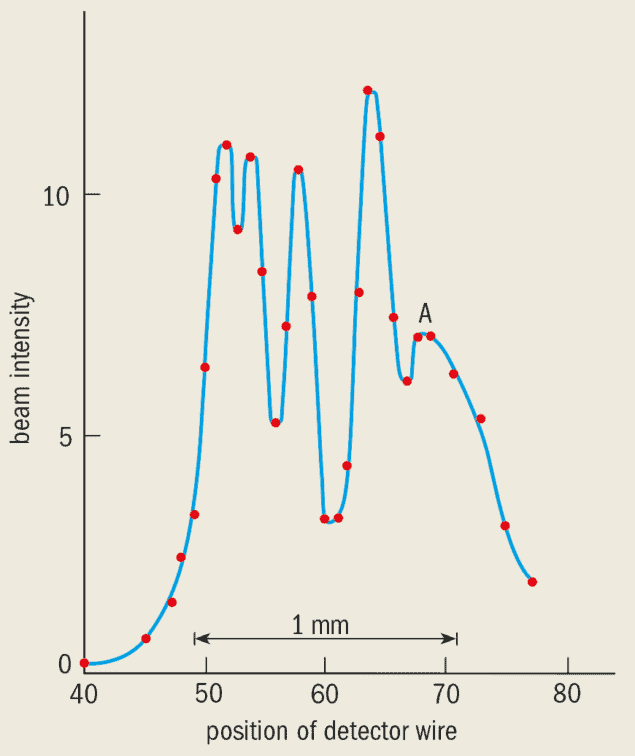
After graduating in 1919, he spent three long years doing nothing. He had no job and wasted time “fooling around” with three friends. He spent long days at the New York City public library. When he finally decided to go to graduate school, he returned to Cornell only to discover that chemistry did not captivate him. In 1923 he transferred to the physics department at Columbia.
Rabi’s approach to his doctoral dissertation was an extension of his past behaviour and gave a glimpse of his future research style. In 1923 physics was “snapping and popping” in Europe. Quantum ideas fascinated Rabi and a new experiment by Otto Stern and Walther Gerlach captivated him so much that he was asked to give a departmental seminar on the subject. Unfortunately for Rabi, quantum theory was not part of the fare at Columbia, nor at other American universities at that time.
Rabi’s dissertation research was to measure the magnetic susceptibility of a class of crystalline substances and had its origins in the physics of the 19th century. Rabi grew crystals and procrastinated. He spent days in the library. He read Zeitschrift für Physik and organized a group of students to discuss the new physics that was taking form in Europe. But he could not bring himself to start the tedious magnetic-susceptibility measurements and employ routine experimental methods. One day, however, while reading James Clerk Maxwell’s 1873 Treatise on Electricity and Magnetism, an idea came to him for a simple and accurate method for doing his measurements.
Rabi suspended his crystal from a glass fibre in a solution and placed the apparatus in a magnetic field. He knew that the weight of the crystal would change as the magnetic field was turned on and off because the solution and the crystal had different magnetic susceptibilities. Rabi then adjusted the magnetic susceptibility of the solution until the weight of the crystal did not change, which meant that the susceptibilities of the crystal and the solution were the same. Finally, he compared the magnetic susceptibility of the solution with that of water, which was known, thus allowing him to determine the susceptibility of the crystal.
Rabi was animated. Here was an experiment with class. In six weeks he measured the susceptibilities of a whole series of crystalline substances, and did so with unprecedented accuracy.
Quantum mechanics became a reality during Rabi’s graduate school days and he wanted to learn the new physics from its creators. With PhD in hand, he went to Europe and spent short periods with Arnold Sommerfeld, Niels Bohr, Wolfgang Pauli, and Werner Heisenberg. However, it was in Hamburg, while presumably working with Pauli where Rabi’s future course was determined.
Otto Stern – whose experiment with Walther Gerlach had so captivated Rabi – was also based in Hamburg. Stern and Gerlach had sent a beam of silver atoms through a non-uniform magnetic field and observed that individual atoms were deflected such that the beam was split into two distinct components. While Stern concluded that he had verified “space quantization” – the most bizarre feature of the old quantum theory – he had unknowingly anticipated the intrinsic angular momentum or “spin” of the electron (see Friedrich and Herschbach in further reading). Electron spins and nuclear spins are responsible for the magnetic properties of materials.
Of course, Rabi’s ongoing enchantment with the Stern-Gerlach experiment drew him into Stern’s laboratory to see the work first hand. On one visit, Rabi made a casual suggestion to Stern about deflecting particles with a uniform magnetic field. “Do it,” said Stern!
The magnetic-deflection method that Rabi demonstrated in Stern’s lab was both simple and successful. He sent a beam of atoms into a homogeneous magnetic field at a glancing angle. The field could be calibrated easily, unlike the inhomogeneous field used in the Stern-Gerlach experiment. As the atoms entered the field, they changed direction according to their magnetic moments. This method came to be called the Rabi field.
The 1930s: nuclear physics with style
In the late 1920s the physics department at Columbia University needed a faculty member who could teach the new quantum mechanics. It so happened that Heisenberg was starting a world tour in early 1929 and his first stop in New York was Columbia. Heisenberg recommended Rabi for the new position and so began his academic career as a lecturer – the lowest rung on the professorial ladder – a few months later.
Rabi’s first two years at Columbia were unproductive. He still regarded himself as a theorist and spent his time applying quantum mechanics to solids. “I had some good ideas,” said Rabi, “but they bored the hell out of me.”
Then, in 1931, Harold Urey published a paper in which he openly acknowledged that his spectroscopic experiments could not determine the nuclear spin of sodium with certainty. There it was. With the nuclear spin of sodium as his objective, Rabi started his molecular-beam laboratory.
Rabi’s first molecular-beam paper, “The nuclear spin of sodium”, was published in 1933 (see Rabi and Cohen in further reading). Again Rabi was frustrated by the available experimental techniques, just as he had been during his thesis research. After months of experiments with different magnetic fields and different field inhomogeneities, Rabi and his first graduate student, Victor Cohen, had accumulated deflection data that required a time-consuming and laborious statistical analysis. “This is not for me,” Rabi said. “I’m going to know my answer at the end of the day.”
Two things happened next. First, Gregory Breit and Rabi showed theoretically how the tiny magnetic moments of the nucleus could be measured in the presence of the much larger electron moments by using a weak magnetic field. Second, Rabi and Cohen modified the standard Stern-Gerlach apparatus to exploit the Breit-Rabi theory.
More specifically, they replaced the single, strong deflecting field with three deflecting fields – one strong field and two weak ones – along the path of the beam. The sodium atoms in the beam therefore experienced three different deflections in succession. Each atom experienced a deflection that depended on its effective magnetic moment, which in turn depended on its hyperfine quantum state. Hyperfine structure results from the interaction of the magnetic moments of the electrons and the nucleus.
The end result was that the beam was split into 2(2I + 1) components, where I is nuclear spin of the sodium atoms. The symmetry of the experiment meant that half of the components (i.e. 2I + 1) were deflected to the right of the detector and half were deflected to the left.
Rabi and Cohen counted the number of components by moving a wire surface-ionization detector across the beam. They found four components on one side, so the nuclear spin of sodium was 3/2 (figure 1). Rabi had his answer at the end of the day. “It just charmed me,” he said. “These atoms in quantized states… Count them! … Each one, I suppose, seeks God in his own way.”
From 1933 until the end of decade, Rabi directed an atomic ballet as atoms pirouetted through his beam apparatus, responding to the magnetic nudges and stimuli exerted on them and giving up their inner secrets. The atoms of many elements formed the corps de ballet, but one atom was the prima ballerina: hydrogen.
Rabi and his collaborators made a series of increasingly accurate measurements of the nuclear spin of the hydrogen atom (i.e. the proton) and the deuterium atom (i.e. the bound state of a proton and a neutron known as the deuteron), culminating in the discovery of the nuclear quadrupole moment of the deuteron in 1940 (see box).
Rabi's experiments on the hydrogens

In 1933, using a beam of hydrogen molecules, Otto Stern had measured the magnetic moment of the proton to be 2.5 ± 0.25 nuclear magnetons. Stern’s result came as a complete surprise. The nuclear magneton is defined as 1 nm = eh/4πMc, where e is the charge of the electron, h is the Planck constant, M is the rest mass of the proton and c is the speed of light. In 1928 Dirac had explained why the magnetic moment of the electron was eh/4πMc, where m is the electron mass, so the proton was expected to have a moment of 1 nuclear magneton.
The significance of the proton, and the fact that the Breit-Rabi weak-field method could measure its magnetic moment using abeam of hydrogen atoms, demanded that Stern’s measurement be repeated. “After all,” said Rabi, “there’s only one proton.”
Rabi’s first experiments on hydrogen and deuterium were crude. A simple deflection method was used, a beam temperature had to be assumed, the velocity distribution of the atoms smeared the results, and the detector had a yellow surface that turned blue where the beam atoms impinged. The results of Rabi’s 1934 experiment were 3.25±0.33 nm for the proton, and 0.7710.2 nm for the deuteron. The results were inconsistent with those of Stern and with experimental uncertainties of 10% and 26% better results were needed.
A second experiment introduced the elegantly simple refocusing technique that presaged the far-reaching magnetic-resonance method. The beam particles passed through two deflecting fields, “A” and “B”, that were oriented to deflect the atoms in opposite directions. As before, the magnitude of the deflection depended on the effective magnetic moments of hydrogen and deuterium. With both fields switched on, atoms deflected one way by the A-field were deflected the other way by the B-field, and all the atoms, fast and slow alike, were refocused into the detector.
When neither magnet was activated, a new detector known as a Stern-Pirani gauge, was positioned to locate the beam. Then the B-field, which was strong enough to effectively destroy the coupling between the electronic and nuclear spin moments, was activated. The detector signal vanished as the beam was split into two components located on each side of the detector. Then the A-field was turned on and its magnitude slowly increased.
For the 2S1/2 quantum state of hydrogen and deuterium, the total angular momentum F can have two values: when the nuclear and electron spins point in opposite directions (F = 0) there is only one hyperfine level, mF = 0; and when these spins point in the same direction (F = 1) there are three hyperfine levels, mF = 1, 0 and –1. As the A-field was increased, the states with the larger magnetic moment, mF = ±1, were refocused into the detector first, followed by the mF = 0 states at a higher field. The 1935 results were 2.8510.15 nm for the magnetic moment of the proton and 0.8510.03 nm for the deuteron. This time the uncertainties were reduced to 5% and 4%.
Rabi then added a static magnetic field between the A- and B-fields. This field was shaped so that the atoms moving through it would experience the effects of a rotating magnetic field. By this means, Rabi was able to determine the signs of the magnetic moments of the proton and deuteron, and found that both were positive. The data also allowed the magnetic moment of the neutron, which had been discovered only three years earlier, to be deduced.
In late 1937 Rabi introduced a homogeneous magnetic field between the A-and B-fields, which had an oscillating radio-frequency (rf) field embedded within it (see figure above). When the A and B deflecting fields were adjusted so that all the beam particles were refocused, the detector signal was at a maximum. Then, with the frequency, ν, of the rf field fixed, the strength of the homogeneous magnetic field, H, was slowly increased.
At some combination of ν and H, beam particles would undergo a quantum transition and could no longer be refocused into the detector by the second magnetic field. This caused the detector signal to decrease. However, increasing H further brought the detector signal back to full strength. A plot of the detector signal against H showed a resonance peak. Rabi showed that the magnetic moments could be determined with unprecedented accuracy when the detector signal was at a minimum. At this point the frequency of the rf field matched the natural precession frequency of the atomic nucleus, and the nucleus absorbed maximum energy from the radio waves. The 1939 results were 2.78+0.02 nm for the proton and 0.85310.007 nm for the deuteron, an accuracy of around 0.7%.
This version of the experiment also led to a major discovery – the deuteron possessed a nuclear quadrupole moment. In other words, the electric charge was not distributed spherically throughout the deuterium nucleus. Moreover, the existence of the quadrupole moment meant that the forces within the nucleus were not “central” as had previously been assumed. It was later found that all nuclei with nuclear spin greater than 1/2 have quadrupole moments, and that a new type of spin-dependent or “tensor” force exists within the nucleus.
The war years
In 1940 the Rabi laboratory, with its galaxy of world-class students and post-docs, was riding on top of the crest of a wave – a wave that was building in amplitude. But it did not last. The highly secret arrival from the UK of a small, odd-looking device called a magnetron brought Rabi’s research to a precipitous halt.
On 6 October 1940 the magnetron – a 10 000 watt source of 10 cm waves – was demonstrated at the Bell Telephone Laboratories. It was immediately clear that the magnetron made radar systems viable on ships and aircraft. One month later, on 6 November, Rabi had moved to the Massachusetts Institute of Technology (MIT) where the Radiation Laboratory had just been launched.
Rabi became the head of the research division and later the associate director of the “Rad Lab”. From the beginning, he took a long-term view and quickly started the development of 3 cm and 1 cm radar systems. He gained the confidence of military leaders and was able to anticipate radar systems that would complement upcoming military initiatives. As Lee DuBridge, director of the Rad Lab, said: “Rabi’s talents were too widespread to confine him to a particular piece of the lab.”
Rabi’s talents were also too broad to restrict him to one laboratory. The Manhattan Project, the code name for the massive effort that brought the atomic bomb to fruition, began at Los Alamos in late 1942. J Robert Oppenheimer, director of the project, recognized that Rabi’s experience at the Rad Lab was what he needed at Los Alamos, and asked him to be associate director on the project. However, Rabi was convinced that victory in the war depended more on radar than on a potential nuclear bomb and declined the offer, although he did become one of Oppenheimer’s two senior consultants and was a frequent visitor to Los Alamos. The other senior consultant was Niels Bohr.
A new Rabi and a new world
At the end of the war, a different Rabi entered a different world. Physicists, riding the successes of the war-winning radar project and the war-ending bomb project, were treated like rock stars are today. No Washington guest list was complete without a physicist. Rabi had the additional aura of having won the 1944 Nobel Prize for Physics. He was, at the age of 47, one of the elder statesman of physics, and his ability to work with policy-makers had launched him onto the world stage. All this meant that Rabi was associated with only a few eventful experiments after the war, although he did, with his students John Nafe and Edward Nelson, expose an anomaly that turned out to correct the electron’s magnetic moment.
The war had hurt Rabi’s department at Columbia University. His colleagues Enrico Fermi and Urey had gone to Chicago for military work and stayed there as professors when the war ended. To strengthen Columbia’s position, in early 1946 Rabi and his student Norman Ramsey, who also went on to win the Nobel prize, organized nine universities in the north-east of the US to push for the creation of a nuclear and particle physics laboratory in the region. As a result Brookhaven National Laboratory, on Long Island in New York, was established in January 1947.
At the same time, Rabi talked to European physicists about the creation of a nuclear physics laboratory in Europe. In June 1950 he attended the general assembly of the United National Educational, Scientific and Cultural Organization (UNESCO) in Florence, Italy. There he carefully built up support for the idea and on the 7 June presented a motion to establish the laboratory. The motion was unanimously accepted. Geneva was selected as the site, and on 15 February 1952 nine nations signed the agreement that established CERN.
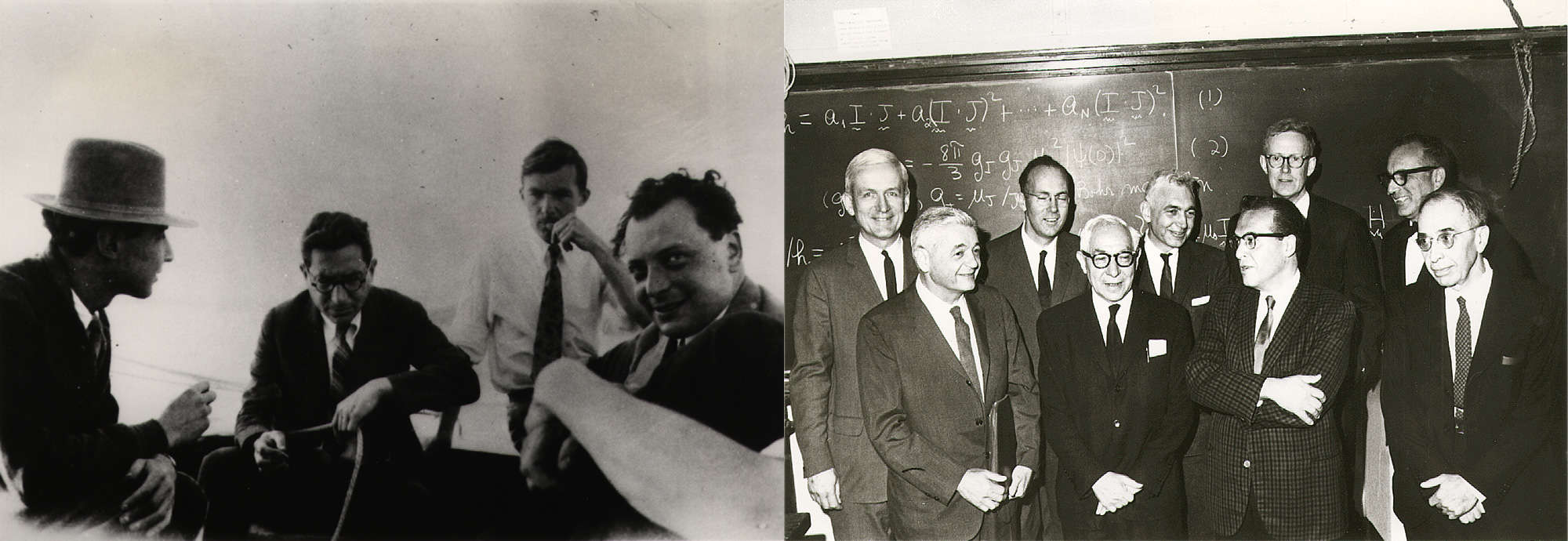
In 1945 the war ended and the nuclear age began. The Cold War started in earnest after the former Soviet Union detonated its first nuclear weapon in 1949. Physicists had created the awesome new power and now became active advisors to world leaders. For Rabi, the opportunities to serve were more than a responsibility – they were an obligation. It is also true that he enjoyed the stage, and he became a member of the General Advisory Committee of the Atomic Energy Commission, which was chaired by Oppenheimer. While members of this committee unanimously advised against the development of a fusion weapon, Rabi and Fermi wrote a minority report in which the issue was couched in broad policy and ethical terms (see Rigden in further reading). One paragraph from the Rabi-Fermi report reads as follows: “The fact that no limits exist to the destructiveness of this weapon makes its very existence and the knowledge of its construction a danger to humanity as a whole. It is necessarily an evil thing considered in any light.”
Rabi’s position was a tough-minded one: a fusion bomb should not be developed; nuclear weapons should not be under any single nation’s control. He proposed confronting the Russians and saying: “Now you have an atomic bomb, and we have lots of them. The atomic arms race is over. We’ll both give up our weapons to international control. If you don’t agree with this plan, we’ll force it on you.” The committee’s advice was ignored.
The committee’s recommendation against the hydrogen bomb, made a few weeks after the Soviet atomic bomb had drained policy-makers’ aplomb, was partly responsible for the downfall of Robert Oppenheimer – but only partly. Oppenheimer was highly charismatic, with a brilliant mind, and a tongue that could crush the most confident opponent. But Oppenheimer, a cult figure after the Second World War, had enemies. When Oppenheimer’s committee (and it was his committee) recommended against the fusion weapon, his alleged association with communists during the 1930s was resurrected and used against him.
A few months prior to the Oppenheimer hearing, President Eisenhower delivered a speech to the United Nations in which he proposed that governments should donate their fissionable materials to an international atomic energy agency that would be chartered to use this new power for peaceful ends. For Rabi, a lover of opera, Eisenhower’s proposal was like an aria. Lewis Strauss, chairman of the Atomic Energy Commission, asked Rabi what response could be made to Eisenhower’s idea. When Rabi suggested holding an international conference, Strauss appointed Rabi chairman of the planning committee.
So here was Rabi working closely with Strauss, Oppenheimer’s most powerful antagonist, while at the same time remaining an eloquent and forceful witness in support of his former colleague. Rabi could neither lose Strauss’s support for the international conference nor could he stand by while his friend Oppenheimer was falsely accused. Oppenheimer, to Rabi’s deep disappointment, was stripped of his security clearance and forced into relative obscurity. The idea for a conference, to Rabi’s great satisfaction, survived.
The inaugural International Conference on the Peaceful Uses of Atomic Energy was held in Geneva in 1955 under the auspices of the United Nations. Dag Hammarskjöld, secretary general of the UN, linked arms with Rabi throughout the planning effort. Hammarskjöld regarded the first conference as one of the most important events in the post-war world, and the series continued long after 1955. Rabi gave the opening address at the fourth international conference in 1971. “Real peace means more than the absence of violent war,” he said. “To fulfil human expectations, peace must be a condition which permits the release of the latent creative energies of all people to the end of enhancing and elevating the quality of human life on this globe.”
Rabi’s legacy
In 1959 the US Navy, through its Naval Research Advisory Committee, wanted to demonstrate the enormous pay-off resulting from the support of basic research. They chose to use the work of Rabi and illustrated the impact of his research by means of a tree. The tree sprang from the root work done by Louis Dunoyer, Otto Stern and Rabi himself. The work of Rabi and his students formed the trunk, and there were numerous branches adorned by the names of physicists whose research could be traced back to Rabi’s work. This research included nuclear magnetic resonance, the discovery of the so-called Lamb shift and the anomalous moment of the electron, which in turn led to refinements in quantum electrodynamics. Rabi’s work also contributed to electron spin resonance, optical pumping, refined molecular-beam methods, masers, radio astronomy and atomic clocks. Among the physicists identified on the “Rabi tree” are 19 Nobel laureates. Since 1958 the tree has sprouted new branches and grown enormously.
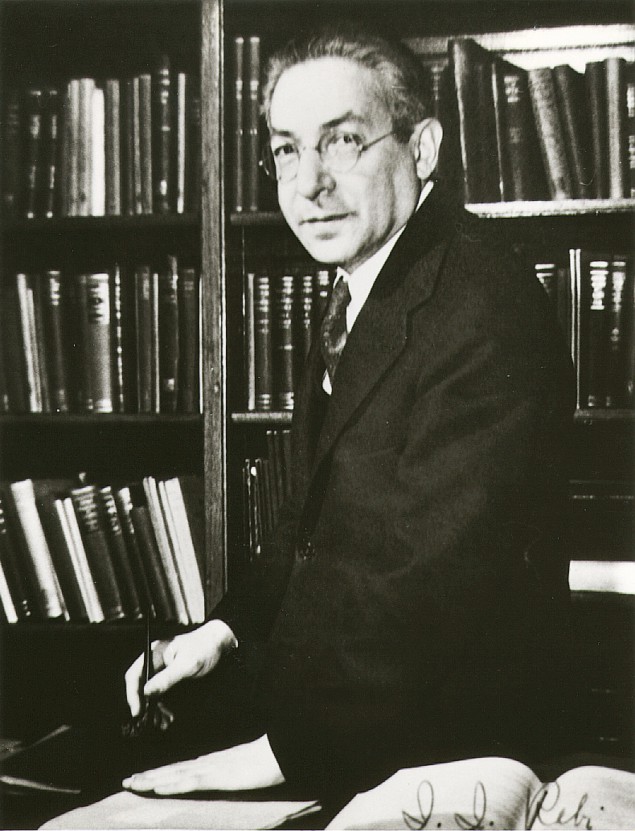
Rabi’s impact on physics, more specifically on American physics, is profound. When Rabi became a lecturer at Columbia, the frontiers of physics were formed by the work of European physicists. By the early 1930s American physics was in the ascendancy and Rabi’s work was at the forefront. An illustrious group of students and post-doctoral associates were drawn to Rabi and his research. Among them were Victor Cohen, Donald Hamilton, Vernon Hughes, Jerome Kellogg, Polykarp Kusch, Sidney Millman, John Nafe, Edward Nelson, Martin Perl, Norman Ramsey, Julian Schwinger, Henry Torrey and Jerrold Zacharias.
These students went on to distinguished careers and high honours, but a part of Rabi remained with them – his standards sat in judgement of their research. “Does it bring you near to God?” Rabi would ask when a former student described his research activities. To Rabi, physics, like religion, springs from human aspirations, from the depths of the soul, from deep thinking and deep feeling. For Rabi, doing great physics was walking the path of God.
During the war, both Edward Purcell, at the Radiation Laboratory, and Richard Feynman, at Los Alamos, referred to Rabi as an elder statesman, even though he was still a young man at the time. As the years passed, Rabi’s influence grew and he was often called the dean of world physics. Rabi died peacefully at his New York home, six months short of his 90th birthday.

